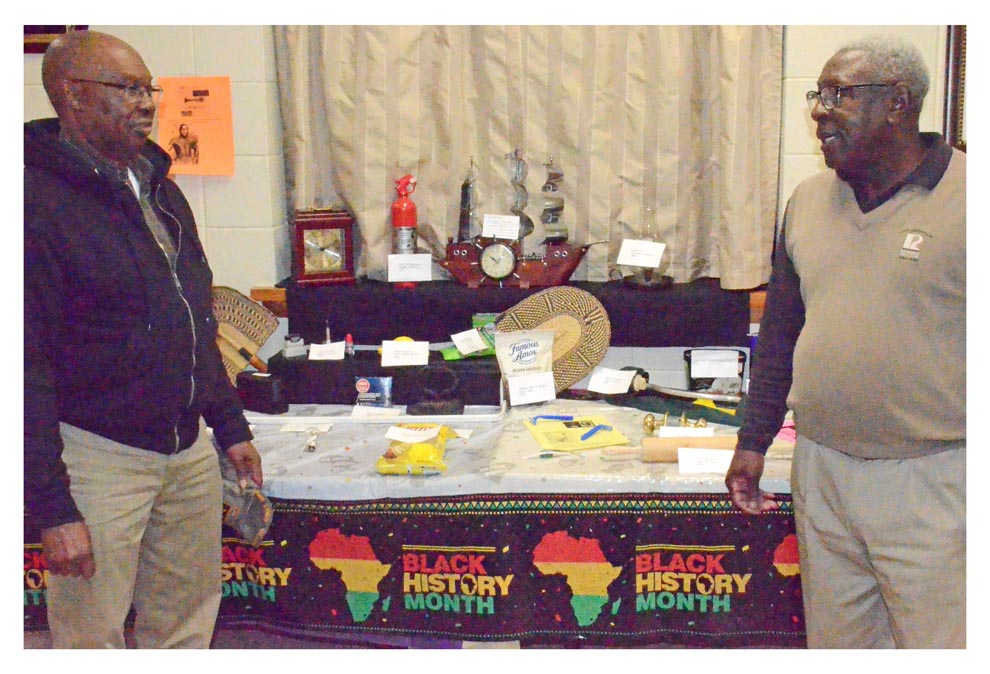By Al Benson
Black History Month at Gayles Memorial Baptist Church in Aurora was personal for congregants.

They loaned artifacts for multiple exhibits at multiple locations in the Church during February.
Betty Gaddy of Oswego, a Gayles member, coordinated the celebration.
According to Gaddy, volunteers made the program a success by loaning personal artifacts, portraying trailblazers, pioneers, printing flyers, recording video, announcements, and helping decorate the Church.
The exhibits ended Sunday, Feb. 26.
Gaddy said her committee, called “One Body, One Accord, One Love,” included Sharron Wilson, Betty Gaddy, Treves Williams, Tomika Rayford, Melita Johnson, Linda Holmes, Julie McGowan, Jeff McGowan and Crystal Mallet.
She acknowledged Pastor Johnnie McGowan and Church First Lady Hazel McGowan for their assistance.
She explained, “My vision was to stir up elder-generation souls, ignite a flame in the middle age generation and to inspire youth to know the history of their ancestors. Knowing your past opens the door to the future.”
Exhibits started at the main entryway with a collage of historians past and present.
Inside a community room, a magazine tabled showcased editions of Ebony, Jet and Essence.
Gaddy said, “these magazines gave us hope, they displayed our accomplishments and lifestyles in such a positive and beautiful way. Not only were they motivational, but they caught the attention of all people of color.”
A biography reading table reflected the raw, real, reality of African Americans’ journey from city to city, country to country. Biographies reported how African Americans were somewhat accepted by mainstream people, while rules and restrictions kept them out of certain hotels, restaurants, stores, and places of business.
A table with children’s books and posters allows black children to see themselves in positive roles, doing remarkable things.
“Hopefully,” Gaddy said, “this display will inspire them to ask more questions and do their own research–for the legacy that others left behind is the pathway to their future.”
A wall display portrayed the cotton business scene with a cotton sack, field hat, chain and cotton scale.
A table of products by black inventors included clocks, golf tees, a fountain pen, and fire extinguisher.
African figures on a table included jewelry, clothing and black artworks.
A History of Quilting wall, including five quilts, represented how quilts included coded messages with to outline escape routes and mark safe places for escaping slaves on the Underground Railroad.

